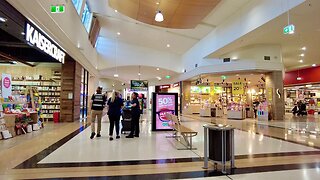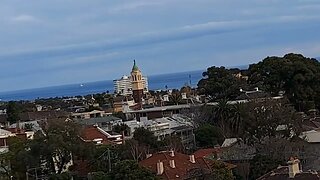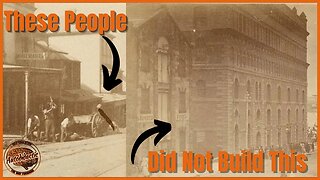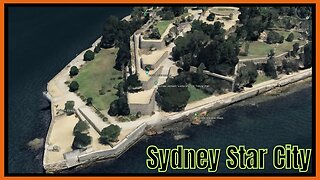MELBOURNE CENTRAL THE COOP’S SHOT TOWER 1889. NOW A SHOPPING CENTRE. TARTARIAN TOURISM IN AUSTRALIA!
The history on this building is elaborate and a lie. Wow look at all the details they made up to sell this story. Of course we know better my friends and this building has all the tell tale signs - red brick tower, huge underground building covered up, impossible to build in the 1800s!!!
"Surely one of the most-Instagrammed buildings in Melbourne, the Coop’s Shot Tower inside Melbourne Central was the tallest building in Melbourne's CBD until the mid-1940s, and has become one of the city’s most enduring landmarks. It's also one of the most significant buildings in Australia’s industrial history.
The Coop’s Shot Tower is one of only three 19th century shot towers remaining in Australia—the oldest (and the only one you can climb) is in Hobart; the tallest is just five kilometres away in Clifton Hill. Thanks to the shopping centre built around it during the 1980s, the Coop’s Shot Tower is the best preserved. Inside the second floor of the tower, Melbourne Central's Shot Tower Museum has the low-down on the history of shot manufacture.
Shot is made from lead, and is much favoured by small game hunters. All the lead used at the Coop’s Shot Tower came from Port Pirie in South Australia, where it was mined from the ground and carted by train to Melbourne. A typically price-volatile metal, lead was sometimes bought in bulk and stockpiled on the first floor of the buildings that you can see flanking the tower.
On a shot-making day, the shot maker would load the pig iron (in the form of lead bars) into a bucket on the second floor. He’d then take the 300-odd stairs to the top of the tower, where he would use a pulley to haul the lead to the top. There, he’d fire up a gas ring vat and melt the lead, which boils at a reasonably low 118 degrees Celsius. Then he would ladle the molten lead into a colander and the lead would fall 132 feet into a vat of water on the second floor. By the time it hit the water, the molten lead would have cooled into spheres of lead shot, which were then shovelled into rolling machine dryers (each punched with holes for auto-sizing) on its way to being packed into bags, ready for despatch and use in shotguns, on scales, in pin ball machines and puzzle games—and even as ships’ ballast.
Some 25 million individual shot pellets could be produced every hour, but the Coop family didn’t just make shot here. They made all manner of lead products—from old-fashioned weights to nails and solder, as well as the stair grips for Melbourne’s trams and all of the lead pipe that was used to encase the city’s first electricity system.
Yes, the Coops were a busy family—and their plumbing supplies business and shot tower was a family-run business from the day James Coop the elder stepped off the boat in 1855. At the time, Melbourne was gripped by gold fever. The population had ballooned from 30,000 to 130,000 in just five years. James Coop, however, was no fool for gold – he had come to supply the burgeoning colony with that most essential of needs: plumbing.
Initially operating from a little shop on Collins Street adjacent to the Regent Theatre, James Coop's business grew quickly and by 1868 he moved to larger premises on Knox Place in the city’s manufacturing precinct. The network of lanes that once snaked between Swanston and Elizabeth, Lonsdale and La Trobe streets was home to ironmongers, clothiers, cigar makers, hoteliers, tailors, jewellers, confectioners, furniture makers, coach builders and much more besides. This was the working heart of the city at the time, and the Coops were right at the centre of it.
By the 1880s, James’s son Walter was running the show with his own son, also named Walter. The rich gold deposits and the mass immigration that the gold rush inspired had made Melbourne one of the richest cities in the British Empire. The Coops continued to expand their business, this time into shot manufacture. In 1889-90, up went Walter Coop’s shot tower. The castellated red-brick building eventually topped out at 50 metres—several metres above the city’s height limit.
The shot tower was the tallest building in Melbourne, but it was no mere monument. By 1894, the Coops were producing six tonnes of shot per week there.
https://www.melbournecentral.com.au/visitor-info/our-heritage
#mudflood, #tartaria, #tartariaaustralia, #Tartarianhuntersmelbourne
Find us on Facebook:
https://www.facebook.com/groups/tartariaaustralia
-
 6:15
6:15
Daily Insight
4 months agoVirtuous Supermarkets Don’t Like Australia Day
68 -
 1:50
1:50
azexplorative1
4 months agoMarvelous Melbourne A Journey Through the Heart of Australia Cultural Capital
44 -
 8:13
8:13
MrFacts23
2 years ago15 TOP-RATED TOURIST ATTRACTIONS IN AUSTRALIA - Top 10 Wonders
181 -
 37:48
37:48
The Antique Nomad
1 year ago $0.01 earnedSURPRISING ANTIQUE CLUSTER! | TRUE BOHO | VINTAGE SHOP WITH ME
138 -
 44:24
44:24
Underdog || Nomad Ethos
6 months agoVictoria Point Shopping Centre || Redland City Tour - QUEENSLAND || AUSTRALIA
12 -
 18:42
18:42
Polly and Jon
8 months agoTop Things To Do in Melbourne in 2023 - According to ChatGPT
185 -
 1:54
1:54
Autodidactic
10 months agoMy view of Melbourne
3591 -
 25:33
25:33
Autodidactic
11 months agoOld World Sydney - 18 Photos from the 1890's
6014 -
 34:54
34:54
Autodidactic
8 months agoStar City in Australia? - Is Sydney a Tartarian Star City
402 -
 12:26
12:26
TheHorizonView
2 months ago15 things to do (an 6 NOT TO DO) in Sydney - Australia Travel Guide
99